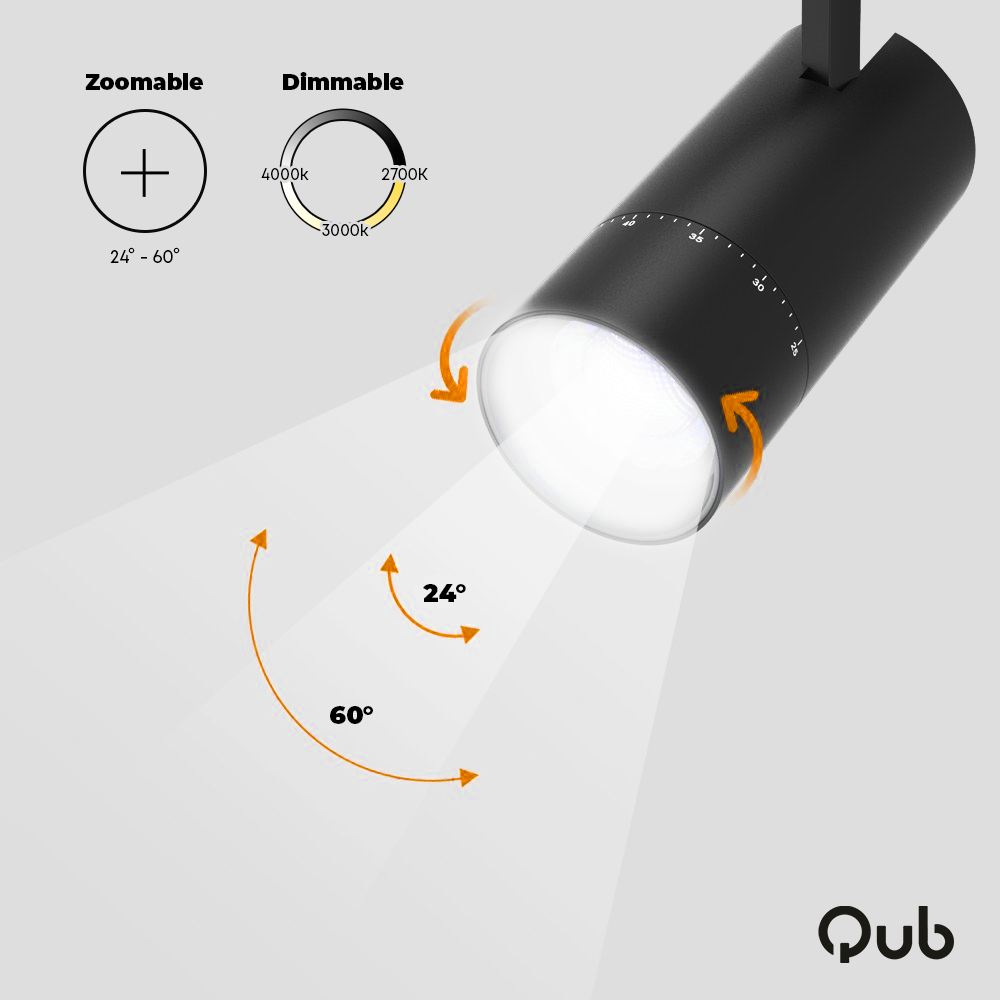How to Choose the Right Beam Angle?


Track Lighting for home/1-circuit
Track lighting for home, also known as 1-phase lighting.
View 1-phase lightingTrack lighting for the office / 3-phase
Track lighting for the office, also known as 3-phase lighting.
View 3-phase lightingTrack lighting for home / Magnetic
Track lighting with magnetic mounting for home.
View magnetic lightingWhich Light Beam to Choose? Everything About Beam Angles and Applications
The light beam of a lamp determines how the light falls in a space and how far it reaches. Especially with spot lighting and track lighting, choosing a narrow or wide beam can make a big difference. Do you want to highlight a painting or illuminate an entire room? The right beam ensures that the lighting perfectly matches your needs.
In this blog, you will discover the different types of light beams, how they affect your lighting, and which one is best suited for your application.
What is a Light Beam?
The light beam, also known as the beam angle, indicates how widely the light from a lamp is spread. It is expressed in degrees.
- Narrow beams (10-25°) provide a concentrated light beam and are often used for accent lighting.
- Wide beams (50° or more) spread light over a larger area and are suitable for general lighting.
With track lighting, choosing the right beam angle is especially important, as it determines the ambiance and functionality of the space.
Types of Light Beams and Their Applications
Below are the different types of light beams and their applications:
| Light Beam (Beam Angle) | Application | Examples |
|---|---|---|
| Narrow beam (10-25°) | Spot lighting and accent lighting | Paintings, art, display cases, products in stores |
| Medium beam (30-45°) | Targeted light for workspaces and ambient lighting | Dining room, kitchen, workspace |
| Wide beam (50° or more) | General lighting for large spaces | Living room, office, showroom, hospitality venues |
| Adjustable beam (Zoom Spot) | Flexible lighting for commercial applications | Shops, galleries, showrooms, offices |
The narrower the beam, the more powerful and focused the light. The wider the beam, the larger the illuminated area but with lower intensity.
Light Beams and Track Lighting: What You Need to Know
Track lighting is often used in homes, stores, offices, and hospitality venues. The right beam ensures that the lighting is both functional and atmospheric.
- Do you want to highlight a product, painting, or specific spot? Choose a narrow beam of 10-25°. This creates a focused light beam and highlights key features.
- Do you want to illuminate a larger area, such as a counter, workspace, or dining table? A medium beam of 30-45° provides a good balance between focused and general lighting.
- Do you want to evenly illuminate an entire space? Choose a wide beam of 50° or more. This is ideal for general lighting in stores, offices, and showrooms.
- Do you want maximum flexibility? Choose a Zoom Spot, where the beam angle is adjustable from narrow to wide.
At Qub Track Lighting, we offer various spotlights with different beam angles so you can easily choose the right one for your needs.
The Zoom Spot for 3-Phase Track Lighting: Maximum Flexibility for the Commercial Market

For commercial customers looking for maximum flexibility, the Zoom Spot for 3-Phase Track Lighting from Qub is an excellent choice.
What makes this spotlight unique?
- Adjustable beam angle – Customize the beam angle from narrow spot lighting to wide base lighting.
- Adjustable color temperature – Choose the right light color for your application, from warm white to cool white.
- Adjustable wattage – Adapt the light intensity to the space and desired ambiance.
Who is this spotlight suitable for?
- Shops and showrooms – Adjust the lighting for each product or collection without installing new spotlights.
- Galleries and museums – Easily change the lighting for artworks without modifying the track system.
- Offices and workspaces – Create work lighting during the day and a warmer ambiance in the evening.
This spotlight offers an all-in-one solution for commercial customers who do not want to be limited to a single lighting setting.
How to Choose the Right Light Beam?
When selecting the right beam angle, consider the following questions:
- What do you want to illuminate?
Do you want to light a specific object, a table, or an entire room? - How high is the ceiling?
For high ceilings, a beam that is too wide may result in insufficient lighting at the workspace. In such cases, a narrower beam is more suitable. - What kind of atmosphere do you want to create?
A narrow beam creates contrast and dynamics, while a wide beam provides soft, even lighting.
Combining Light Beams
Often, a combination of different light beams is the most effective. In a store, for example, a wide beam can provide base lighting, while narrower beams highlight specific products.
In homes, a track lighting system can consist of:
- Wide spots (50°+) for general lighting.
- Targeted spots (25°-30°) for workspaces and ambient lighting.
- Narrow beam spots (10°-15°) for decorative accents such as art or furniture.
- Zoom Spots for maximum flexibility in commercial environments.
Conclusion: Which Light Beam Best Suits Your Needs?
- Accent lighting or product lighting? Choose a narrow beam (10-25°).
- Work or functional lighting? Opt for a medium beam (30-45°).
- General lighting for an entire room? Use a wide beam (50° or more).
- High ceilings? Choose a narrower beam to maintain light intensity.
- Maximum flexibility? Choose a Zoom Spot with adjustable beam, color, and wattage.
Qub Track Lighting is happy to help you choose the right lighting. Browse our selection of track spotlights and discover the possibilities.


